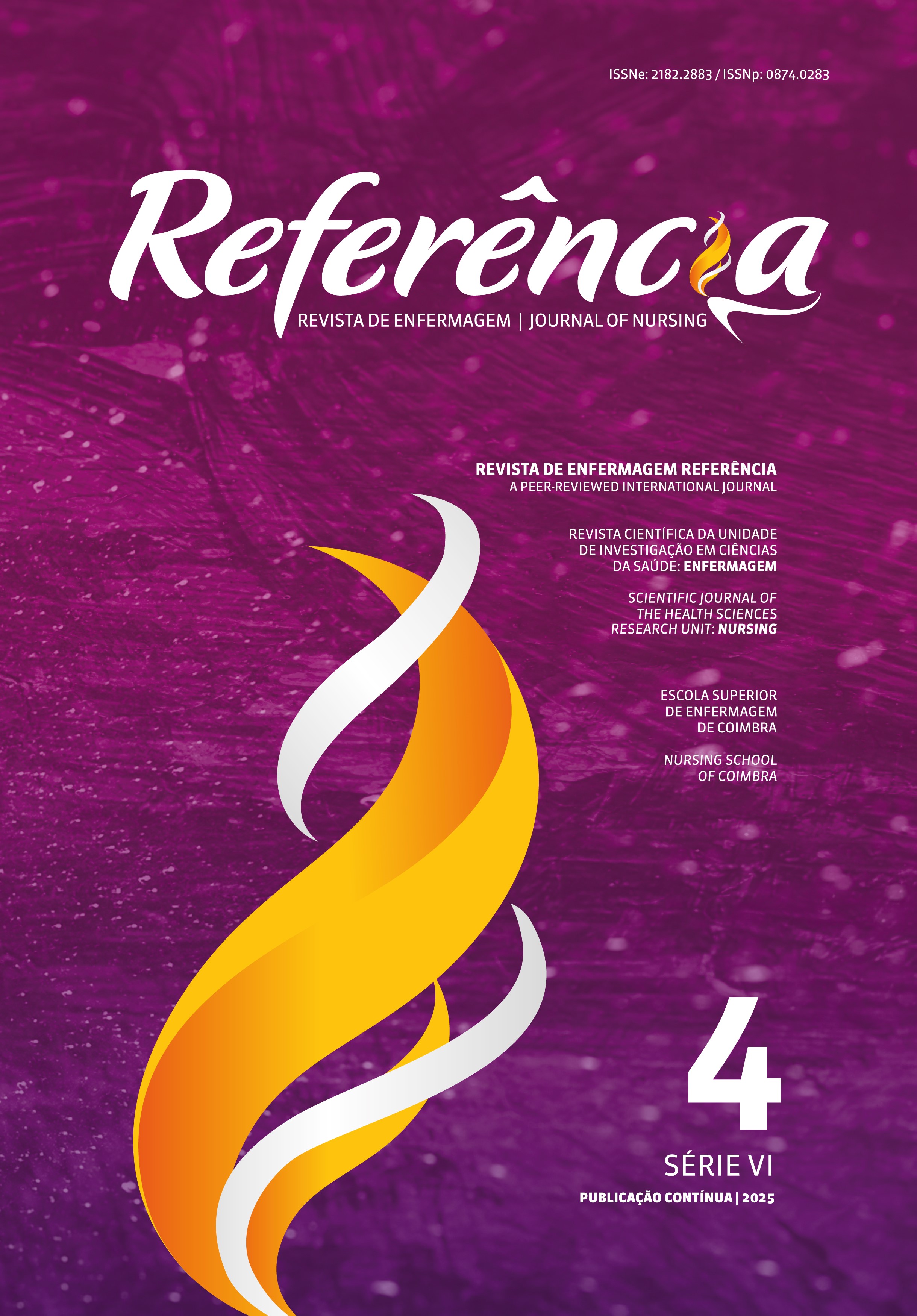Incidencia y tipo de traumatismo vascular periférico en personas sometidas a exámenes de diagnóstico por imagen
DOI:
https://doi.org/10.12707/RIV19061Palabras clave:
enfermería, diagnóstico por imagen, venas, cateterismo periférico, diagnóstico de enfermeríaResumen
Marco contextual: La venopunción es un procedimiento frecuente en la atención de enfermería, y es necesario mapear/identificar los posibles problemas relacionados, considerando las especificidades de las pruebas diagnósticas, para subvencionar la atención.
Objetivo: Analizar la incidencia y los tipos de manifestaciones de los traumatismos vasculares periféricos en personas sometidas a una tomografía computarizada y a una resonancia magnética.
Metodología: Cohorte retrospectiva de documentos sectoriales y cohorte prospectiva con personas que se sometieron a una punción para realizarse una tomografía computarizada y una resonancia magnética de contraste. Los datos recogidos entre junio y diciembre de 2018 se trataron con la estadística descriptiva y el cálculo de la incidencia.
Resultados: Participaron 76 usuarios y 2946 registros de las fichas de venopunción. En la cohorte retrospectiva, la incidencia de extravasación de contraste fue del 8,4%. En la cohorte prospectiva, la incidencia de traumatismo vascular fue del 52,6%. Las manifestaciones identificadas fueron eritema, dilatación de la vena, residuo de sangre, equimosis y endurecimiento.
Conclusión: Se identificaron manifestaciones que pueden ser tratadas/minimizadas, y el enfermeiro es responsable de tomar decisiones basadas en las pruebas científicas que respaldan la práctica, con el objetivo de mantener la seguridad de los pacientes y la calidad de los cuidados de enfermería.
Descargas
Citas
Acauan, V., & Rodrigues, M. C. (2015). Critérios de segurança na administração de contraste na angiotomografia cardíaca: Percepção da enfermagem. Revista Rene, 16(4), 504-513. doi:10.15253/2175-6783.2015000400007
Arreguy-Sena, C., & Carvalho, E. C. (2009). Risco para trauma vascular: Proposta do diagnóstico e validação por peritos. Revista Brasileira de Enfermagem, 62(1), 71-78. doi: 10.1590/S003471672009000100011
Bausone-Gazda, D., Lefaiver, C. A., & Walters, S.-A. (2010). A randomized controlled trial to compare the complications of 2 peripheral intravenous catheter-stabilization systems. Journal of Infusion Nursing, 33(6), 371-384. doi: 10.1097/NAN.0b013e3181f85be2
Botton, A., Cúnico, S. D., & Strey, M. N. (2017). Diferenças de gênero no acesso aos serviços de saúde: Problematizações necessárias. Mudanças – Psicologia da Saúde, 25(1), 67-72. doi:10.15603/2176-1019/mud.v25n1p67-72
Conner, B., Ash, R., Allen, W., Brown, T., Hill, J., Hook, M., & Fishback, S. (2017). Preventing intravenous contrast extravasation in CT: A simple solution. Journal of the American College of Radiology, 14(10), 1326-1332. doi: 10.1016/j.jacr.2017.05.020
Cruz, B. M. (2012). A desmistificação do uso dos contrastes radiopacos. Publicatio UEPG: Ciências Biológicas e da Saúde, 18(1), 39-43. doi: 10.5212/Publ.Biologicas.v.18i1.0005
Danski, M. T., Johann, D. A., Vayego, S. A., Oliveira, G. R., & Lind, J. (2016). Complicações relacionadas ao uso do cateter venoso periférico: Ensaio clínico randomizado. Acta Paulista de Enfermagem, 29(1), 84-92. doi: 10.1590/1982-0194201600012
Danski, M. T., Oliveira, G. L., Johann, D. A., Pedrolo, E., & Vayego, S. A. (2015). Incidência de complicações locais no cateterismo venoso periférico e fatores de risco associados. Acta Paulista de Enfermagem, 28(6), 517-523. doi: 10.1590/1982-0194201500087
Krempser, P., Arreguy-Sena, C., & Barbosa, A. P. (2013). Características definidoras de trauma vascular periférico em urgência e emergência: Ocorrência e tipos. Escola Anna Nery, 17(1), 24-30. doi: 10.1590/S1414-81452013000100004
Marschall, J., Mermel, L. A., Fakih, M., Hadaway, L., Kallen, A., O’Grady, N. P., . . . Yokoe, D. S. (2014). Strategies to prevent central line-associated bloodstream infections in acute care hospitals: 2014 update. Infection Control and Hospital Epidemiology, 35(7), 753-771. doi: 10.1086/676533
Melo, E. M., Aragão, A. L., Pessoa, C. M., Lima, F. E., Barbosa, I. V., & Studart, R. M. (2015). Cuidados dispensados pela equipe de enfermagem durante o procedimento de punção venosa periférica. Revista de Enfermagem UFPE On Line, 9(3), 1022-1030. doi: 10.5205/reuol.7505-65182-1-RV.0903201502
Miranda, G. M., Mendes, A. C., & Silva, A. L. (2016). Population aging in Brazil: Current and future social challenges and consequences. Revista Brasileira de Geriatria e Gerontologia, 19(3), 507-519. doi: 10.1590/1809-98232016019.150140
Nobre, A. S., & Martins, M. D. (2018). Prevalência de flebite da venopunção periférica: Fatores associados. Revista de Enfermagem Referência, 4(16), 127-138. doi: 10.12707/RIV17058
Oliveira, A. S., Costa, P. J., Graveto, J. M., Costa, F. J., Osório, N. I., Cosme, A. S., & Parreira, P. M. (2019). Práticas dos enfermeiros na cateterização intravenosa periférica: Um estudo descritivo. Revista de Enfermagem Referência, 4(21), 111-120. doi: 10.12707/RIV19006
Oliveira, A. M., Danski, M. T., & Pedrolo, E. (2016). Inovação tecnológica para punção venosa periférica: Capacitação para uso da ultrassonografia. Revista Brasileira de Enfermagem, 69(6), 1052-1058. doi: 10.1590/0034-7167-2016-0125
Pacheco Compaña, F. J., Gago Vidal, B., & Méndez Díaz, C. (2014). Extravasation of contrast media at the puncture site: Strategies for management. Radiología (English Edition), 56(4), 295-302. doi: 10.1016/j.rxeng.2014.02.005
Rose, T. A. Jr., & Choi, J. W. (2015). Intravenous imaging contrast media complications: The basics that every clinician needs to know. The American Journal of Medicine, 128(9), 943-949. doi:10.1016/j.amjmed.2015.02.018
Sales, O. P., Oliveira, C. C., Spirandelli, M., & Cândido, M. T. (2010). Practice nurses in Center of Image Diagnosis. Journal of the Health Sciences Institute, 28(4), 325-328. Recuperado de http://adm.online.unip.br/img_ead_dp/44071.PDF
Silva, H. C., Bitencourt, A. G., & Chojniak, R. (2018). Extravasation of iodinated contrast medium in cancer patients undergoing computed tomography. Radiologia Brasileira, 51(4), 236-241. doi: 10.1590/0100-3984.2017.0064
Tamura, A., Kato, K., Kamata, M., Suzuki, T., Suzuki, M., Nakayama, M., . . . Ehara, S. (2017). Selection of peripheral intravenous catheters with 24-gauge side-holes versus those with 22-gauge end-hole for MDCT: A prospective randomized study. European Journal of Radiology, 87, 8-12. doi: 10.1016/j.ejrad.2016.12.005






